Orchids such as phalaenopsis bloom twice a year. The period lasts about two weeks, and its other variety blooms once a year, but the flowers do not fade for six months. The time and frequency of flowering depends on growing conditions, on courtship after pruning, and on the plant variety. A wax coating on a flower branch indicates the end of flowering.
Content
Do I need to prune the orchid after flowering
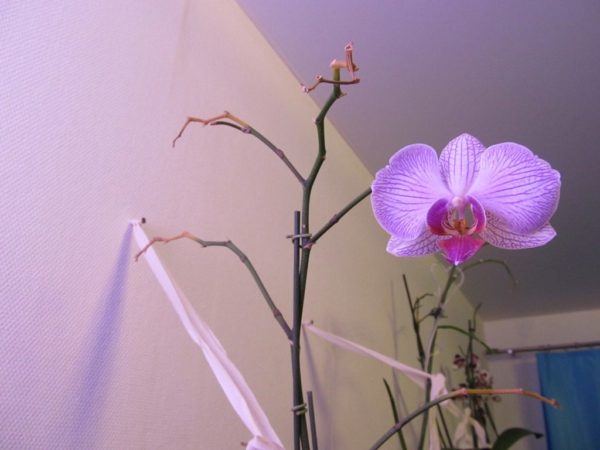 After the appearance of the buds, the orchid builds up biomass. There is no photosynthesis, but the process requires an increased intake of nutrients, fluids, and an increased load on the plant.
After the appearance of the buds, the orchid builds up biomass. There is no photosynthesis, but the process requires an increased intake of nutrients, fluids, and an increased load on the plant.
Branches with dry flowers, not all varieties of Phalaenopsis orchids need to be cut. There are hybrids that use peduncles for further flowering. Some species have annual flower branches. They bloom longer, growing flowers. Such an arrow dries out after flowering, the plant discards wilted flowers. The arrow is cut off, leaving a small stump at the base. The flower begins to grow a stem from a sleeping bud for future flowering. When this does not happen, the orchid dries the entire shoot to the base, it is cut off. Pruning extends the life of the plant and increases the appearance of buds.
Cutting of peduncles is carried out:
- the stem turned yellow, became lilac or brown;
- the flower branch has dried;
- there are no half a year of flowers on a green branch.
Phalaenopsis is cut off for the sake of beauty. After flowering orchids, dried branches do not look aesthetically pleasing, harmful insects can settle on them. Pests move to neighboring plants.
How to prune phalaenopsis after flowering
After the flowers dry out, the time for rest at phalaenopsis comes. Until a new phase of buds has begun, the plant can be pruned. For examples, you can figure out when a flower needs a procedure, and when it's worth it
Cutting with withered flowers
When orchid has faded, and the tip of the arrow is still green, then flowers may appear on the top of the head. If the branch is completely dry, then you need to cut the peduncle 1.5-2 cm above the upper bud. Escape can be lateral. The buds on it will not form quickly, but they will bloom as beautifully as always.
If the peduncle is cut too low, the new stem will be long. When pruned under the spine, the plant will bloom soon.
Peduncles of the orchid after flowering remained green
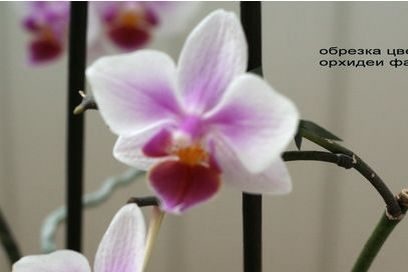 The flower arrow is not cut off when it, having dropped flowers, has remained green. On it soon buds or shoots are formed. This happens 4-10 weeks after the first drying of the flowers.
The flower arrow is not cut off when it, having dropped flowers, has remained green. On it soon buds or shoots are formed. This happens 4-10 weeks after the first drying of the flowers.
You can cut off the green arrow and put it in some water. The flower stalk after flowering will form a new baby. After flowering, orchid flower pruning is often done in spring, a 2-3 cm length is left above the sleepy bud. A baby will appear in this place soon and begin its development.
He became brown and dried up
The stem began to darken, dried up, became like a stick, you can remove it. At this point, it should be completely dry.If the part has remained green, then the nutrient components still enter there, and the flower stalk itself can recover over time.
In order to correctly prune the peduncle of an orchid, you need to leave a 2-3 cm rosette first. After 30-60 days, with good care a new stem will grow.
Partially dried
If the flower branch has buds from below, and the top has dried, then only the dry part should be cut, capturing a little live stem. Flowers may still appear from the buds. If you cut the entire trunk early, then the restoration of the flower branch will be delayed for six months.
You can stimulate a flower - prune orchids after flowering at home in the spring. Since shoots appear only in summer, spring pruning will push the plant to the formation of new processes.
Has sleeping kidneys and gradually fades.
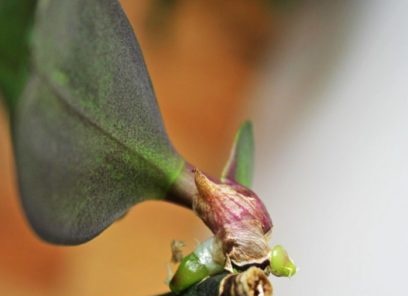 It is necessary to observe the sleeping kidneys. Perhaps sprouts or a new arrow will appear soon. If it is decided to cut the peduncle, then a distance of 2-3 cm is measured over the kidney, the upper part is removed.
It is necessary to observe the sleeping kidneys. Perhaps sprouts or a new arrow will appear soon. If it is decided to cut the peduncle, then a distance of 2-3 cm is measured over the kidney, the upper part is removed.
How to prune an orchid after flowering at home
In order not to damage the flower, observe the cutting conditions. Properly pruning an orchid after flowering will help skill, disinfection and sharp knives.
Trimming tools
To cut the orchid, prepare sharp scissors. Poorly sharpened knives, when squeezing the stem, damage the plant tissue much further from the cut. Incorrect pruning can damage the peduncle. Infections can enter the cavity of the branch.
The garden pruner has a sharp blade, it does not damage the stem. After flowering, the orchid should be pruned carefully because the plant is too capricious. If you decide to use a sharp knife, then you need to cut the twig very carefully.
Disinfection
Disinfection is important after pruning. If the procedure is not done, there is a high probability of infection with fungi. A diseased plant will develop poorly and grow, buds may not appear.
Before starting work, the scissors are thoroughly wiped with alcohol. If there is no alcohol, the secateurs are kept over a fire or placed in boiling water. Process the knife with a steep solution of potassium permanganate, lowering the tool into the liquid for 10 minutes. Chlorine solution is also suitable for disinfection, scissors are washed in boiled water after the procedure. Work is carried out with gloves so as not to injure the skin of the hands.
Determination of the cut point and its processing
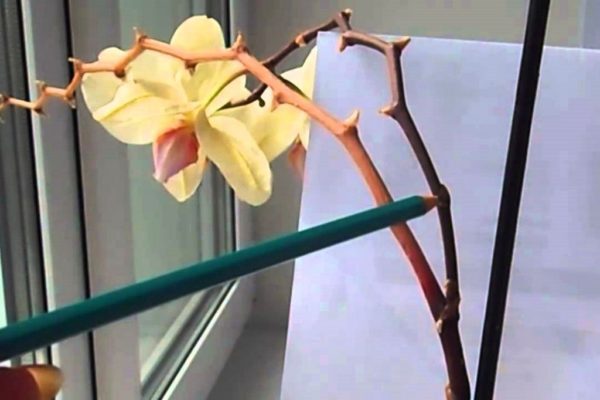 Pruning orchids passes over the developed bud by 2 cm so that it does not completely dry. Sometimes an arrow is cut off over 2 or 3 kidneys. The closer the kidney is to the leaf outlet, the more buds there will be on the side branch. The following buds appear in the third month after circumcision.
Pruning orchids passes over the developed bud by 2 cm so that it does not completely dry. Sometimes an arrow is cut off over 2 or 3 kidneys. The closer the kidney is to the leaf outlet, the more buds there will be on the side branch. The following buds appear in the third month after circumcision.
If the top root is rotten or shrunk, then cut it off with a 2 cm capture of the green part. The plant is moved to another container with a new substrate to prevent fungal infection again.
Is it possible to prune orchid leaves? Orchid leaves are pruned when dry, diseased or yellowed leaves. They are cut off with the capture of healthy tissue, only the dry part should be cut. Then you need to process the slice of the orchid with cinnamon or charcoal.
To process all cut parts, coal (crushed), dry cinnamon is used, coated with brilliant green or iodine solution. Concentrated iodine must be diluted so as not to burn the flower.
If the stem inside is hollow
Some varieties of phalaenopsis have a hollow peduncle. Such a trunk is thick and the stem should be trimmed carefully. It may break or flatten. An open slice cannot be left.
After circumcision during irrigation, water enters the cavity, it stagnates, and a mass of bacteria and fungi multiplies in it. If the cut is not covered, the stump can rot. Lubricate the stem after cutting with beeswax.
Pruning orchid roots
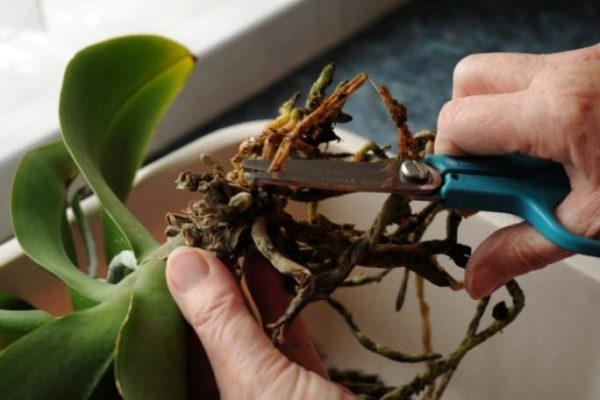 The plant has two types of roots - aerial and those that are in the substrate. Air processes serve for additional nutrition and absorption of water. Roots are trimmed after they begin to dry or fester. The rest of the rhizome is cut off only when transplanted into another container. Dead roots are cut with sharp scissors. To process a slice of the roots of the orchid must be crushed with coal.
The plant has two types of roots - aerial and those that are in the substrate. Air processes serve for additional nutrition and absorption of water. Roots are trimmed after they begin to dry or fester. The rest of the rhizome is cut off only when transplanted into another container. Dead roots are cut with sharp scissors. To process a slice of the roots of the orchid must be crushed with coal.
Roots can dry out due to lack of moisture or with an excess of fertilizing. Overfeeding of plants causes a chemical burn at the roots. If there are few dried roots, then this may be a natural death. Usually they are cut off during transplantation. It is better not to rush with cutting the root system. Perhaps the roots are recoverable.
Recovery process:
- the flower is removed from the container, the roots are shaken;
- the roots are washed with water and soda;
- you can leave the plant in solution for half an hour;
- prepare secateurs, disinfect it;
- cut off only dried roots to a healthy site;
- slice sprinkled with charcoal.
When the rhizome remains in the water, the roots become elastic, turn green. Dried processes are no longer restored, have a gray or brown color, they are removed. New roots grow on 50-60 days. When the roots grow 5-7 cm long, they are transplanted into a new container and a new substrate.
Orchid care after cutting
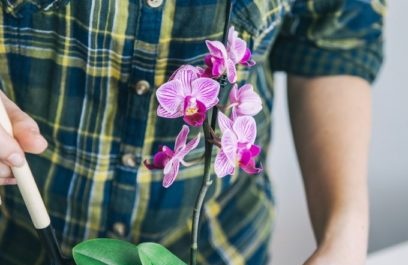 After stress, the orchid needs care. The arrangement of containers with a flower does not need to be changed; phalaenopsis does not like movements. If he has taken root in one place, the transfer of the pot will delay the appearance of a new arrow and cause a new stress state in the plant. They move it to another place only when the foliage wrinkled or turned yellow.
After stress, the orchid needs care. The arrangement of containers with a flower does not need to be changed; phalaenopsis does not like movements. If he has taken root in one place, the transfer of the pot will delay the appearance of a new arrow and cause a new stress state in the plant. They move it to another place only when the foliage wrinkled or turned yellow.
Care Rules:
- Water the plant as the soil dries, if it is cool in the room, evaporation occurs slowly, watering should be reduced. Water is taken warm, without impurities, soft. Moisture must not get into the axils of the leaves. Stagnant water will cause fungal diseases. Look after plants in the evening or in the morning.
- The temperature in the room is set to 20-24 * C, the night temperature should not fall below 16 * C.
- Do not place pots above the battery or radiator.
- Dry air can harm orchids. Apply a spray or put water with pebbles next to the pot.
- Lighting should be diffuse. Direct rays will burn the plant. You can block the window with a matte film, but you can’t deprive the tropical beauty of light.
- Fertilizers do not apply when the plant is resting.
Extending flowering by pruning over the bud
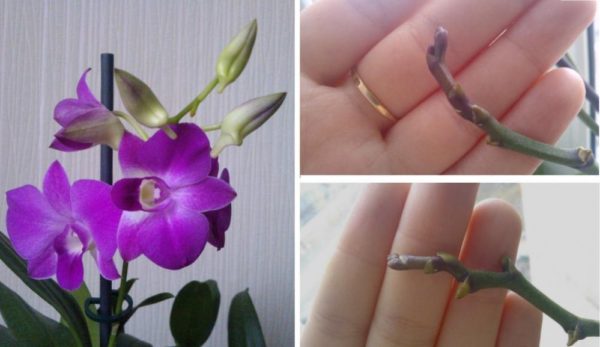 Many people want to make the orchid bloom constantly. But continuous flowering destroys the flower, the forces go away, it can die. If circumcision is not done at all, then the shoots will grow rapidly. Many new branches will appear, but without flowers.
Many people want to make the orchid bloom constantly. But continuous flowering destroys the flower, the forces go away, it can die. If circumcision is not done at all, then the shoots will grow rapidly. Many new branches will appear, but without flowers.
After cutting a flower branch above a bud, flowering does not resume. But the procedure significantly reduces the time between pruning and the appearance of new buds. The plant does not spend its energy on the formation of a new arrow.
After circumcision, phalaenopsis rests for two months. During this time, it is fully restored, accumulating resources for a new flowering. Proper pruning and subsequent care increase the life of the orchid, help to start blooming with renewed vigor. Indicators of correct actions will be green roots, leaf growth and the appearance of a new peduncle.

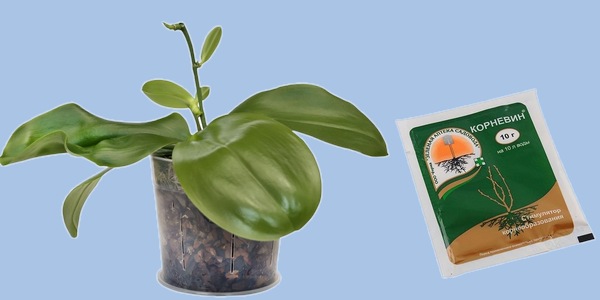
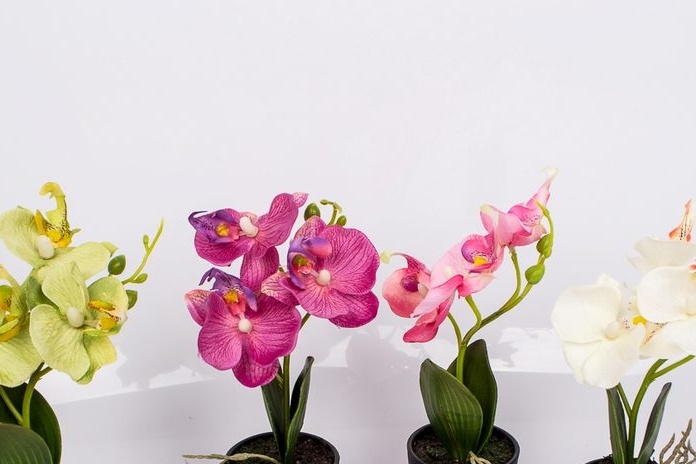
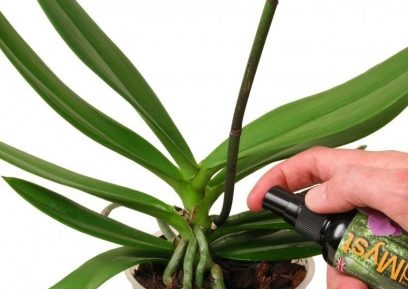
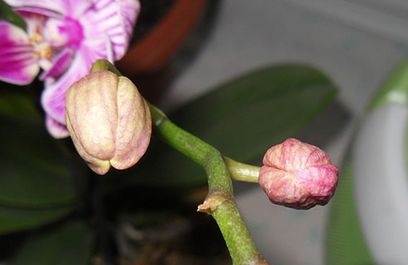 Reasons why orchids fall flowers and what to do
Reasons why orchids fall flowers and what to do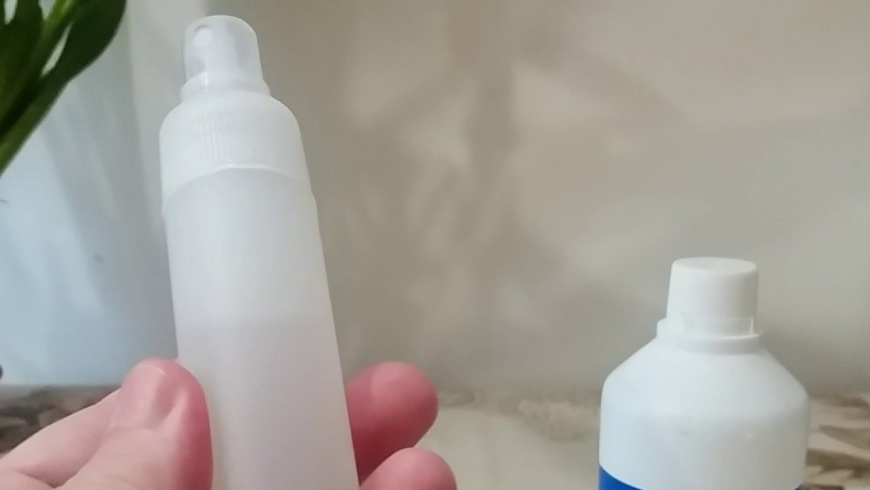 How to use hydrogen peroxide for orchids and why
How to use hydrogen peroxide for orchids and why Midges are wound up in the orchid: effective ways to get rid
Midges are wound up in the orchid: effective ways to get rid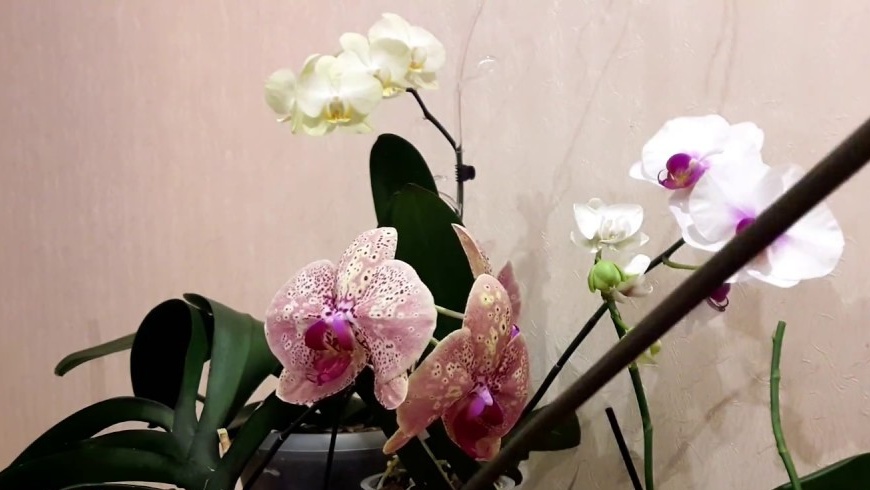 Is it possible to transplant an orchid during flowering
Is it possible to transplant an orchid during flowering